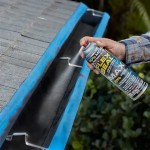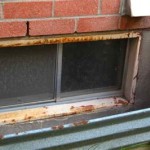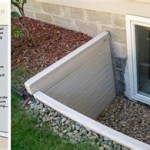How to Remove Carpet From a Basement Floor
Removing carpet from a basement floor is a common task for homeowners undertaking renovations, dealing with water damage, or simply seeking to update their living space. While the process can be physically demanding, it is often achievable as a do-it-yourself project, saving labor costs. Success hinges on careful preparation, employing the right tools, and adhering to a methodical approach to minimize damage and potential hazards.
Basement carpets frequently face unique challenges compared to those installed in other areas of the house. The proximity to the ground often leads to higher moisture levels, creating environments conducive to mold and mildew growth, as well as potential damage from flooding. Furthermore, the tack strips used to secure the carpet may be more firmly adhered to the concrete floor, requiring extra effort to remove.
Before commencing the removal process, a thorough assessment of the carpet's condition is recommended. This assessment should include identifying areas with visible mold, water stains, or pest infestations. Depending on the findings, professional assistance may be required to address underlying issues and ensure safe handling and disposal of contaminated materials. Ignoring pre-existing problems can lead to health complications and structural damage to the basement.
Preparation and Safety Measures
Prior to commencing any physical work, thorough preparation is essential. This involves gathering the necessary tools and equipment, clearing the work area, and implementing appropriate safety measures. Rushing into the project without adequate preparation can lead to inefficiencies, damages, and potential injuries.
The required tools generally include a utility knife with extra blades, a pry bar, a pair of pliers, a hammer, a scraper, heavy-duty trash bags, and work gloves. A dust mask or respirator is highly recommended to protect against dust, allergens, and mold spores that may be present in the carpet and underlying padding. Eye protection, such as safety glasses, is also crucial to prevent debris from entering the eyes.
Clearing the work area involves removing all furniture, appliances, and personal belongings from the basement. If some items cannot be removed entirely, they should be covered with plastic sheeting to protect them from dust and debris. This also provides a clear and unobstructed workspace, allowing for efficient and safe movement during the removal process.
Proper ventilation is crucial, especially in confined basement spaces. Opening windows and doors, if possible, will help to circulate fresh air and dissipate dust and odors. If natural ventilation is insufficient, consider using a fan to improve airflow. This reduces the risk of inhaling harmful particles and improves overall working conditions.
Before cutting the carpet, it's imperative to locate and shut off the power to any electrical circuits that run beneath or near the carpet. This prevents accidental electrical shocks during the removal process. Similarly, water lines should be identified and protected to avoid accidental damage that could lead to flooding.
Carpet Removal Process
The actual carpet removal process involves several stages, each requiring careful attention to detail. The process begins with cutting the carpet into manageable strips, followed by detaching it from the tack strips, removing the padding, and finally, addressing any remaining residue or adhesive on the concrete floor.
Using the utility knife, cut the carpet into strips that are approximately 2-3 feet wide. This makes them easier to handle and roll up. Make long, controlled cuts, ensuring that the blade is sharp to avoid tearing the carpet. Dull blades can make the job more difficult and increase the risk of injury. Change the blade frequently as it becomes dull. Overlapping the cuts can make pulling the carpet off easier.
Once the carpet is cut into strips, begin pulling it away from the walls, where it is secured by tack strips. These strips are lined with sharp tacks that grip the carpet. Wearing gloves is essential to protect hands from these tacks. Use pliers to carefully pull the carpet away from the tack strips, working slowly and methodically to avoid tearing the carpet or injuring oneself. If the carpet is particularly resistant, a pry bar can be used to gently lift it away from the tack strips.
After removing the carpet, the underlying padding must be addressed. In many cases, the padding is glued directly to the concrete floor. This requires some effort to remove. Start by pulling up any loose pieces of padding by hand. For sections that are firmly adhered, use a scraper to loosen the adhesive. A floor scraper with a long handle can be more efficient, allowing for more leverage and reducing strain on the back. Apply steady pressure and work in small sections to gradually remove the padding.
Once the carpet and padding are removed, inspect the concrete floor for any remaining adhesive residue. Several methods can be used to remove this residue, including chemical adhesive removers and mechanical scraping. Chemical removers should be used with caution, following the manufacturer's instructions and ensuring adequate ventilation. Mechanical scraping involves using a scraper or a floor grinder to physically remove the adhesive. A floor grinder can be rented from most equipment rental companies and is particularly effective for large areas with stubborn residue. Once again, make sure you wear your mask for this.
As the carpet, padding, and adhesive are removed, immediately place them into heavy-duty trash bags. This prevents the spread of dust, debris, and potential contaminants. Seal the bags tightly and dispose of them according to local regulations. Some municipalities may have specific guidelines for disposing of carpet and padding, particularly if they contain mold or other hazardous materials.
Tack Strip and Fastener Removal
After the carpet and padding have been removed, the tack strips remain attached to the perimeter of the room. These tack strips are typically secured to the concrete floor with nails or adhesive and must be removed to prepare the floor for subsequent treatments or flooring installations. The proper removal of tack strips is crucial for safety and to prevent damage to the underlying concrete.
Using a pry bar, carefully pry the tack strips away from the concrete floor. Position the pry bar between the tack strip and the floor and apply steady pressure. Work slowly and methodically, moving along the length of the tack strip to gradually loosen it. Avoid using excessive force, as this can crack or damage the concrete. If the tack strips are particularly stubborn, a hammer can be used to tap the pry bar, providing additional leverage.
As the tack strips are removed, nails or staples may remain embedded in the concrete floor. These fasteners must be removed to prevent injuries and to create a smooth surface for future flooring installations. Use pliers or a nail puller to carefully extract the nails or staples. If the fasteners are broken or deeply embedded, a punch and hammer can be used to drive them further into the concrete, ensuring that they are flush with the surface.
Once the tack strips and fasteners have been removed, inspect the concrete floor for any holes or cracks. These imperfections should be filled with a concrete patching compound to create a smooth and level surface. Follow the manufacturer's instructions for mixing and applying the patching compound. Allow the compound to dry completely before proceeding with any further flooring installations or treatments.
Once the tack strips, staples, and residue are cleaned up, you may need to dispose of the trash. Some areas may have special requirements for disposing of carpeting, padding, or tack strips. Check with your city or county.
Following these guidelines when removing your carpet will help to ensure the safety and cleanliness of the space. Failing to remove all parts of the old carpeting can lead to future problems.

How To Remove Carpet Glue From Concrete Floor Step By Guide

How To Remove Carpet Glue From Concrete 4 Proven Ways Network

How To Remove Carpet Glue From Concrete Floor Step By Guide

How To Remove Carpet Glue From Concrete Floor Step By Guide

How To Remove Carpet Glue Bob Vila

Simple Steps On How To Remove Carpet Glue From Concrete Floors All American Flooring Dfw S Favorite Remodeler Since 1989

Heavy Carpet Glue Removal

Quick How To Remove Glued Carpet Padding Underlayment From Concrete Floor Youtube

How To Remove Carpet In 5 Simple Steps Budget Dumpster

Wet Carpet In Basement How To Remove It Victorious Flooring
Related Posts







